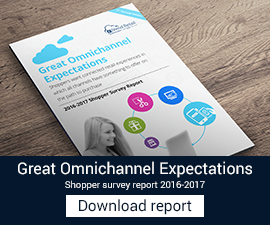
CitiXsys invites you at NRF and experience how iVend Retail Management Suite can help your business turn profitable and your customers happier. Thousands of stores in over 45+ countries are running iVend Retail from CitiXsys and are more profitable and efficient.
Retail industry has matured over the years and grown exponentially but retailers have found it difficult to keep up with the pace of modernization and automation required at the systems level. Home grown solutions, legacy systems and proprietary systems within the ecosystem of the retailers have resulted in inefficient and disconnected systems.
CitiXsys enhances the whole retail management experience by combining cutting edge technologies and the best practices prevalent in the industry in its iVend Retail Management suite. The application suite not only treats the entire landscape as single holistic enterprise but also seamlessly integrates the key functions of retail through iVend Loyalty, iVend eCommerce, iVend Mobility and iVend Analytics that are integral parts of the suite.
Be sure to stop by and visit us at Booth #3539 to:
| Learn how to enhance customer’s shopping experience and maximizing returns to the retailer’s investment | How integrated Retail management solutions can help retailer’s improve efficiency | How digital passes negate the need to have plastic gift cards, loyalty cards, gift coupons ad help them engage with customers and simultaneously Go Green. | Benefits of having a flexible Mobile POS that operates with a common view of inventory, order management, payments etc. in both Online and offline mode | Strategies to enable Retailers of all sizes to deliver a mobile integrated Instore Experience through Android and iOS devices |
Retail’s Biggest Show begins on 13th January 2014 and CitiXsys gives you a chance to Grab your free Expo pass worth $750 here.







 ach out and get to know your customers. Find out what their likes and dislikes are. Ask for their name and zip code when they purchase an item, allowing you to track their buying habits.
ach out and get to know your customers. Find out what their likes and dislikes are. Ask for their name and zip code when they purchase an item, allowing you to track their buying habits.





